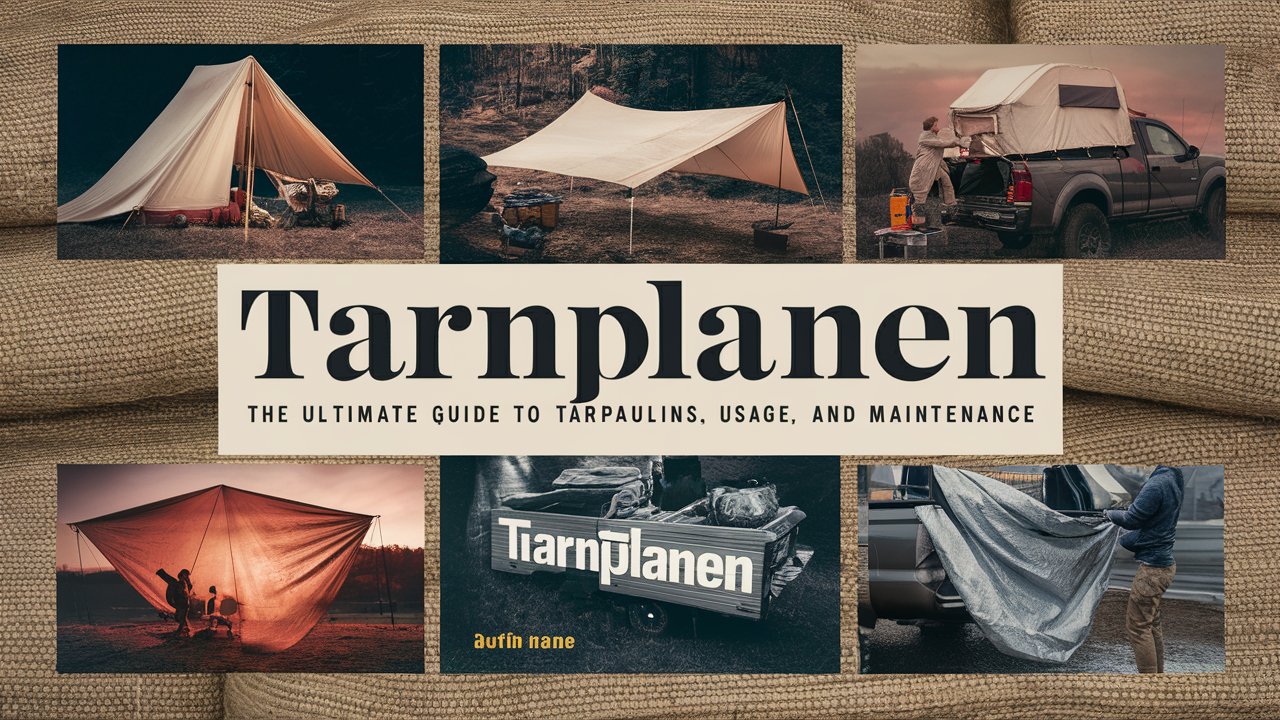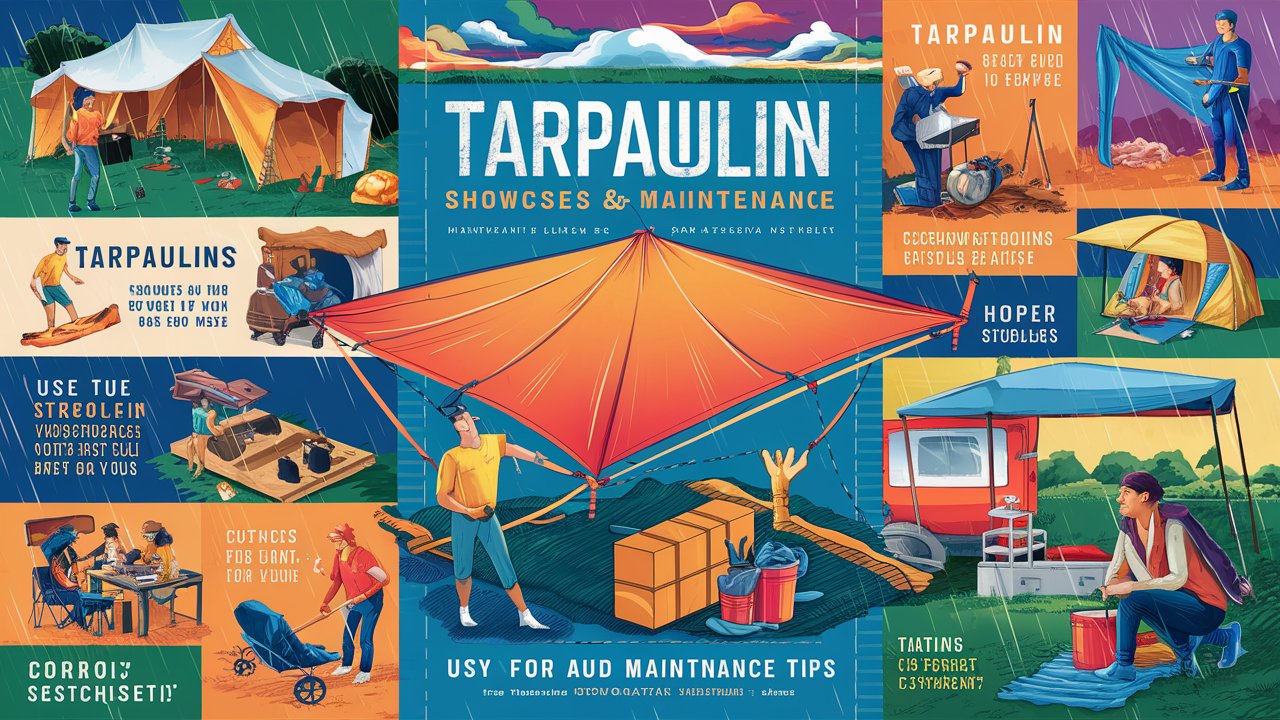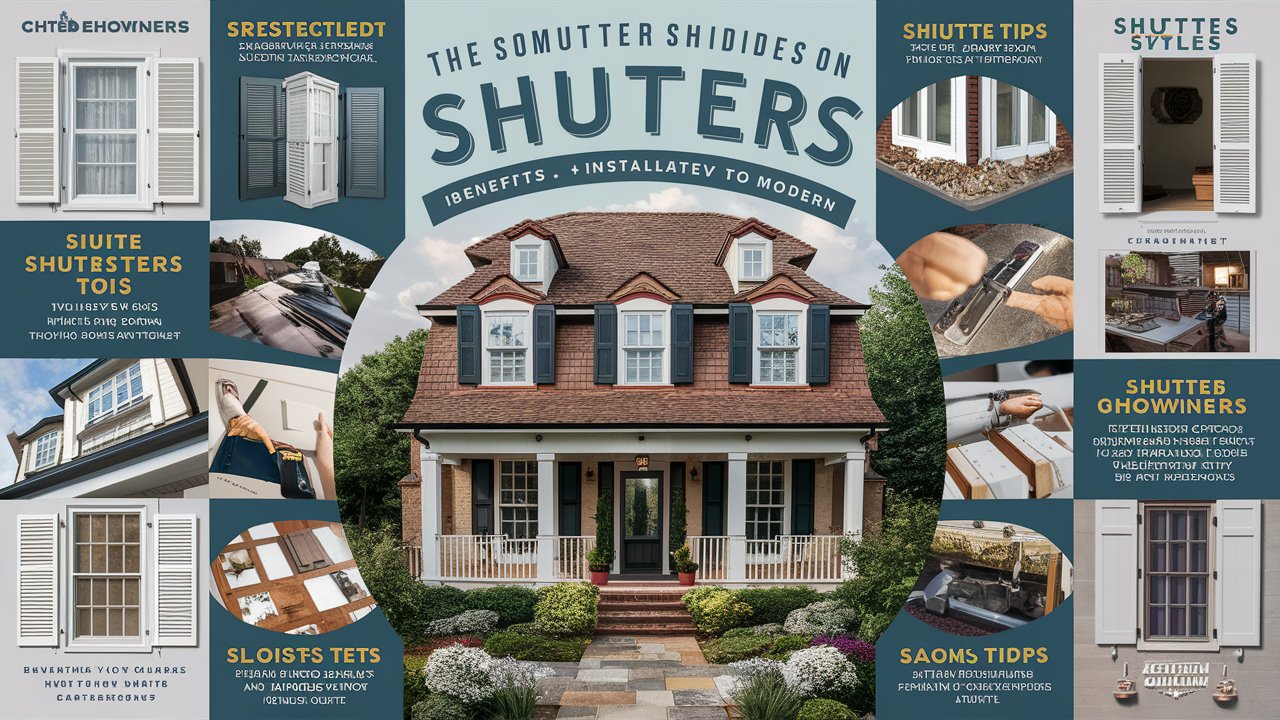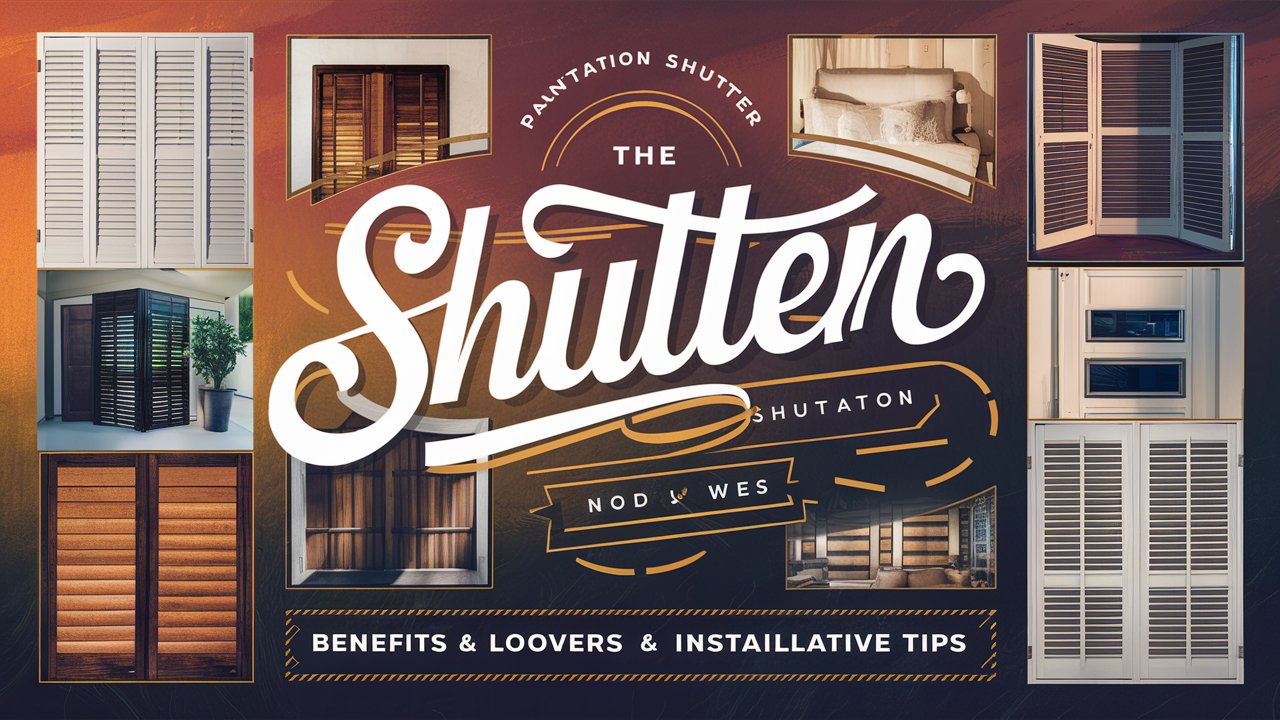Home
Tarnplanen – The Ultimate Guide to Tarpaulins, Usage, and Maintenance

In today’s world, tarnplanen—also known as tarpaulins—play a crucial role across industries and everyday life. From construction sites to gardening, vehicle protection, camping, and agriculture, these durable covers ensure protection from harsh weather conditions, UV rays, dirt, and moisture. Understanding how to choose the right tarnplanen, how to use it effectively, and how to maintain it can make a significant difference in both performance and longevity. In this comprehensive guide, we will explore every aspect of tarnplanen, ensuring you make informed decisions that meet your needs perfectly.
What is Tarnplanen (Tarpaulin)?
A tarnplanen is a large sheet of strong, flexible, water-resistant material, often made from polyethylene, canvas, or vinyl-coated fabrics. These materials are reinforced with grommets, making it easy to secure them using ropes or bungee cords. The primary purpose of a tarnplanen is to offer protection—whether it’s shielding objects from rain, sunlight, or debris.
There are various types of tarnplanen, including:
-
Polyethylene Tarpaulins – Lightweight, waterproof, and perfect for general outdoor use.
-
Canvas Tarpaulins – Heavy-duty, breathable, and ideal for long-term covering.
-
Vinyl Tarpaulins – Industrial-grade, oil-resistant, and suitable for trucks or commercial equipment.
Types of Tarnplanen and Their Specific Uses
1. Polyethylene Tarnplanen
Polyethylene tarnplanen are among the most common due to their lightweight and affordable nature. They are perfect for temporary covering needs such as camping tents, construction materials, and garden furniture. Their UV resistance and waterproof properties make them ideal for outdoor protection.
2. Canvas Tarnplanen
Made from natural cotton or blended fabric, canvas tarpaulins are breathable and prevent condensation buildup. These are ideal for long-term storage, covering machinery, or painting projects. Their durability and tear-resistance make them suitable for heavy-duty applications.
3. PVC or Vinyl Tarnplanen
These are industrial-grade and designed for high-performance applications. Vinyl tarpaulins are resistant to oil, grease, chemicals, and abrasion. Commonly used in trucking, agriculture, and marine industries, they provide maximum protection and longevity.
4. Mesh Tarnplanen
Mesh tarpaulins allow airflow while still offering shade and protection. They’re frequently used in construction sites, scaffolding, and gardening, helping prevent wind damage and sunburn on plants.
Key Features to Consider When Buying Tarnplanen
When selecting the best tarnplanen, it’s vital to assess several features to ensure you get maximum value and durability:
-
Material Quality – Choose high-quality polyethylene, canvas, or vinyl depending on your use case.
-
Thickness and Weight – Measured in mils or GSM (grams per square meter); heavier tarps are more durable.
-
UV Resistance – Essential for outdoor use to prevent color fading and material breakdown.
-
Waterproofing – A must for rain protection and moisture-sensitive items.
-
Grommets and Reinforcements – Look for rust-resistant eyelets and reinforced edges to ensure easy and secure installation.

Popular Applications of Tarnplanen
Construction and Industrial Use
In construction, tarnplanen protect building materials, scaffolding, and equipment from rain, dust, and sunlight. They’re also used as temporary roofing or safety barriers.
Agriculture and Farming
Farmers use tarnplanen to cover hay, feed, and machinery, as well as to create makeshift shelters. Their weatherproofing helps prevent losses during wet seasons.
Transport and Logistics
Vinyl tarnplanen are popular for truck covers, trailers, and cargo protection. They prevent spoilage, rust, and damage during transit.
Home and Garden
At home, tarnplanen can cover vehicles, furniture, woodpiles, or swimming pools. Gardeners use them to control weeds, retain soil moisture, and shield plants.
Camping and Outdoor Recreation
For campers and adventurers, tarnplanen serve as ground sheets, rain shelters, or windbreakers, ensuring comfort and safety in nature.
How to Maintain and Extend the Life of Your Tarnplanen
Proper maintenance is essential to get the most from your tarnplanen. Here’s how:
-
Clean Regularly – Wash with mild soap and water to remove dirt, grime, and chemicals. Avoid harsh detergents.
-
Dry Before Storage – Always dry thoroughly before folding to prevent mold and mildew growth.
-
Store Properly – Keep in a cool, dry place, folded neatly to avoid cracking or creasing.
-
Inspect Frequently – Check for tears or grommet wear and repair immediately using tarp tape or patch kits.
-
Avoid Sharp Edges – When securing, ensure no sharp objects or corners are pressing against the fabric.
By following these steps, you can extend the lifespan of your tarnplanen significantly.
Benefits of Using Tarnplanen
The advantages of tarnplanen are extensive:
-
Weather Resistance – Shields from rain, snow, sun, and wind.
-
Durability – Built for long-term performance under harsh conditions.
-
Versatility – Suitable for residential, commercial, and industrial purposes.
-
Affordability – Provides cost-effective protection compared to permanent structures.
-
Portability – Lightweight and easy to handle, install, and store.
Common Mistakes to Avoid When Using Tarnplanen
Even the best tarnplanen can fail if not used correctly. Avoid these errors:
-
Overstretching – This causes tears and edge fraying.
-
Improper Securing – Use bungee cords, rope, or tie-downs instead of nails or staples.
-
Ignoring Maintenance – Regular cleaning and inspection prevent early damage.
-
Exposure to Chemicals – Some chemicals can degrade the tarp material.
Conclusion
A tarnplanen is far more than just a cover—it’s a multi-purpose protective solution that adds value and security to your belongings, projects, and equipment. Whether you need it for construction, transport, farming, or recreation, choosing the right type, maintaining it well, and using it properly will ensure long-term reliability and cost efficiency.
FAQs About Tarnplanen
Q1: What is the best material for tarnplanen?
The best material depends on use—polyethylene for lightweight needs, canvas for breathability, and vinyl for industrial durability.
Q2: Can tarnplanen withstand heavy rain?
Yes, waterproof tarpaulins made from polyethylene or vinyl offer excellent protection from heavy rain and moisture.
Q3: How do I secure a tarnplanen properly?
Use rope, bungee cords, or ratchet straps through the grommets, ensuring even tension and no overstretching.
Q4: Are tarnplanen UV-resistant?
Most high-quality tarpaulins feature UV protection to prevent color fading and material degradation under sunlight.
Q5: How long does a tarnplanen last?
With proper care, a premium-grade tarpaulin can last from 3 to 10 years, depending on usage and exposure.
Home
The Ultimate Guide to Shutters: Styles, Benefits, and Installation Tips

Shutters are more than just window coverings; they represent a perfect blend of functionality, elegance, and home value. For centuries, shutters have been used to provide privacy, insulation, light control, and timeless style. Whether you’re looking for interior shutters to transform your living space or exterior shutters to add curb appeal, understanding the different types, materials, and installation methods can help you make the best choice.
In this comprehensive guide, we explore everything you need to know about shutters: from their history and design options to their maintenance and benefits.
What Are Shutters?
Shutters are solid and stable window coverings consisting of a frame with horizontal or vertical louvers. These can be fixed or operable, allowing homeowners to adjust airflow, privacy, and natural light. Unlike ordinary blinds or curtains, shutters offer a more durable and stylish solution that can complement any architectural style, from modern minimalism to traditional elegance.
Types of Shutters
1. Interior Shutters
Interior shutters are installed inside the home and are perfect for achieving light control, energy efficiency, and aesthetic charm. Popular types include:
-
Plantation Shutters – Known for their wide louvers, plantation shutters are a favorite choice for living rooms and bedrooms, offering excellent ventilation and light regulation.
-
Café Style Shutters – Covering only the bottom half of windows, café shutters add European flair while preserving outside views.
-
Tier-on-Tier Shutters – Featuring independent top and bottom panels, these shutters provide maximum flexibility for privacy and lighting.
2. Exterior Shutters
Exterior shutters enhance curb appeal and protection for your windows. Common varieties include:
-
Louvered Shutters – Classic and versatile, these provide ventilation while adding elegance to a home’s façade.
-
Raised Panel Shutters – A more traditional look, often paired with colonial-style homes.
-
Board and Batten Shutters – Rustic and charming, ideal for farmhouse or cottage-style properties.
-
Bahama Shutters – Hinged at the top, they offer shade and storm protection, popular in tropical climates.
Materials Used in Shutters
When choosing shutters, material selection is crucial for durability, maintenance, and cost-effectiveness.
-
Wood Shutters – Traditional and luxurious, wood shutters offer timeless elegance but may require regular maintenance.
-
Composite Shutters – Made from engineered materials, these mimic the look of wood but are more resistant to moisture and warping.
-
Vinyl Shutters – Budget-friendly, lightweight, and low maintenance, though less durable than wood or composite.
-
Aluminum Shutters – Strong and weather-resistant, often used for exterior storm protection.
Benefits of Installing Shutters
1. Energy Efficiency
Shutters act as an additional insulation layer, reducing heat loss in winter and keeping interiors cool in summer. This can lead to lower energy bills and improved comfort.
2. Light and Privacy Control
Unlike curtains, shutters allow you to tilt the louvers to achieve the perfect balance of natural light and privacy, without compromising ventilation.
3. Aesthetic Appeal
Shutters add a clean, sophisticated look to any space. Interior shutters elevate the design of living areas, while exterior shutters provide curb appeal and architectural harmony.
4. Increased Home Value
Real estate experts agree that well-designed shutters can boost property value due to their durability, timeless appeal, and functional benefits.
5. Durability
Shutters are built to last, especially when made from quality materials. Unlike blinds or drapes, they don’t wear out easily and require minimal replacement.

How to Choose the Right Shutters for Your Home
When selecting shutters, consider:
-
Style of Your Home – Match the shutters to your interior or exterior architectural design.
-
Purpose – Are they mainly for aesthetics, energy efficiency, or storm protection?
-
Material Preference – Choose based on climate, budget, and maintenance needs.
-
Color Options – Neutral tones blend seamlessly, while bold colors make a statement.
Shutter Installation: DIY vs. Professional
DIY Installation
If you are handy with tools, DIY shutter installation can save costs. It requires precise measurements and basic carpentry skills.
Professional Installation
For a perfect fit and long-term performance, hiring professionals ensures accuracy, customization, and expert finishing. Many companies also offer warranties on installation.
Maintenance Tips for Shutters
-
Dust Regularly – Use a microfiber cloth or vacuum with a brush attachment.
-
Avoid Excess Moisture – Especially for wood shutters, keep them dry to prevent warping.
-
Check Hinges and Hardware – Tighten screws and oil hinges when necessary.
-
Repaint or Refinish – For exterior wood shutters, periodic refinishing preserves their look and protection.
Shutters vs. Blinds: Which is Better?
While blinds are a cheaper option, shutters are more durable, energy-efficient, and stylish. Shutters also add to a property’s resale value, whereas blinds are often seen as temporary solutions.
Conclusion
Shutters are a smart investment for any homeowner seeking a balance of style, privacy, energy efficiency, and durability. With a wide range of designs, materials, and customization options, shutters offer timeless beauty and functional benefits that few other window treatments can match. Whether you choose interior plantation shutters or exterior board and batten shutters, the right choice will elevate both the look and value of your property.
Frequently Asked Questions (FAQ)
Q1: Are shutters worth the investment?
Yes, shutters increase energy efficiency, enhance privacy, and boost home value, making them an excellent long-term investment.
Q2: Can shutters be installed on all types of windows?
Absolutely. Shutters can be custom-made to fit any window size or shape, including arches and bay windows.
Q3: Do shutters require a lot of maintenance?
No, shutters are relatively low-maintenance compared to curtains and blinds. Simple dusting and occasional refinishing are usually enough.
Q4: What are the best shutters for humid climates?
Composite or vinyl shutters are best for high-moisture areas, as they resist warping and damage.
Q5: Can shutters help with noise reduction?
Yes, shutters provide an added barrier that helps reduce outside noise, making them ideal for urban settings.
-

 Entertainment2 months ago
Entertainment2 months agoHitaar – Meaning, Significance, and Complete Guide
-

 Technology2 months ago
Technology2 months agoThe Ultimate Guide to Trucofax: Features, Benefits, and How It Works
-

 Trends2 months ago
Trends2 months ago“Coomer SU: Understanding the Phenomenon and Its Impact”
-

 Business2 months ago
Business2 months agoTroozer com – Everything You Need to Know About the Platform
-

 Business1 month ago
Business1 month agoهنتاوي.com – The Complete Guide to Understanding, Accessing, and Exploring Online Content Safely
-

 Technology2 months ago
Technology2 months ago“How to Redeem Robux on iRobux.com – Step-by-Step Guide (2024)”
-

 Science2 months ago
Science2 months agoUnderstanding HCOOH + CH₂ → H₂O: A Complete Guide
-

 Technology2 months ago
Technology2 months agoHMS Photovoltaik: The Future of Solar Energy Efficiency & Innovation


